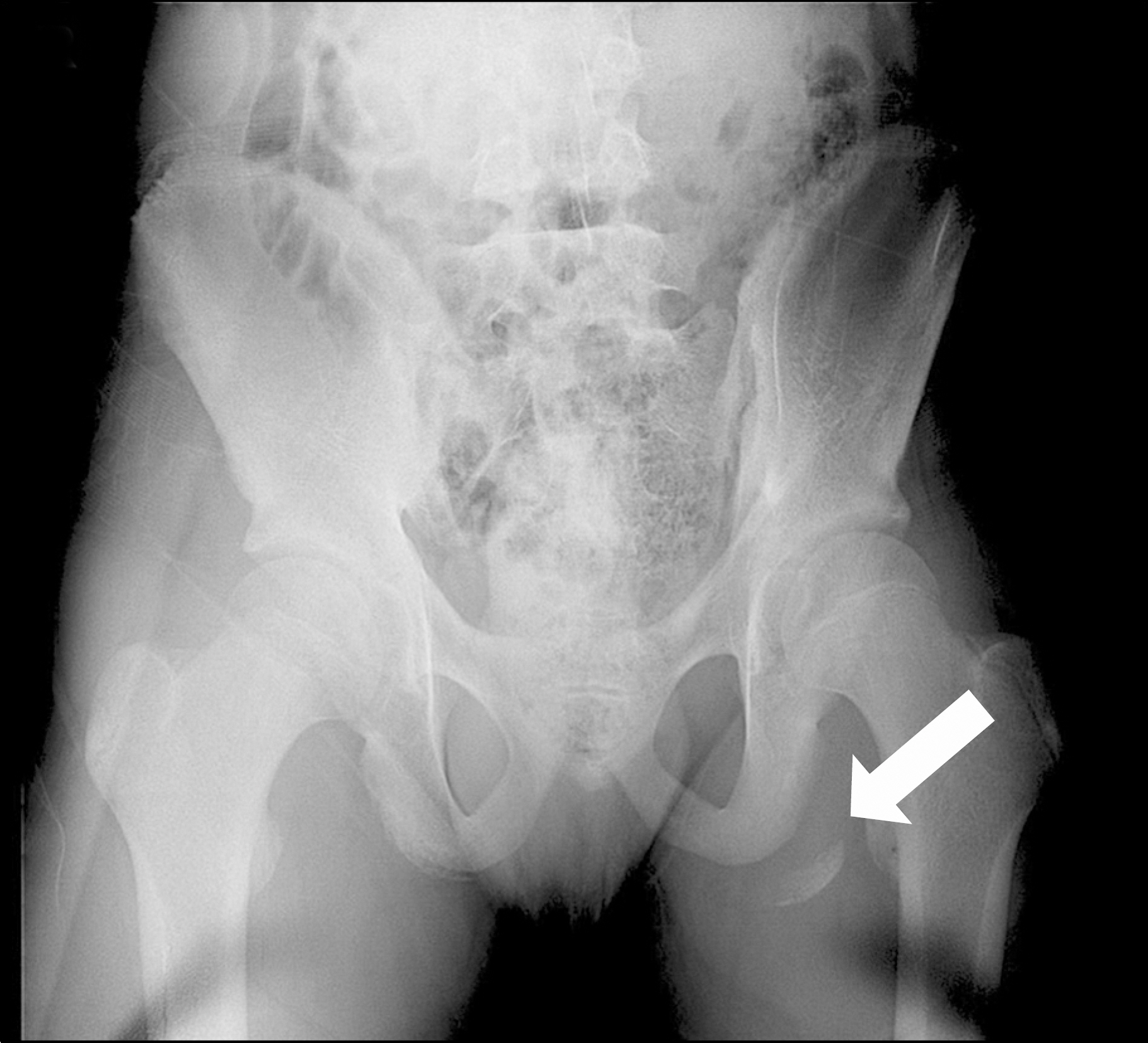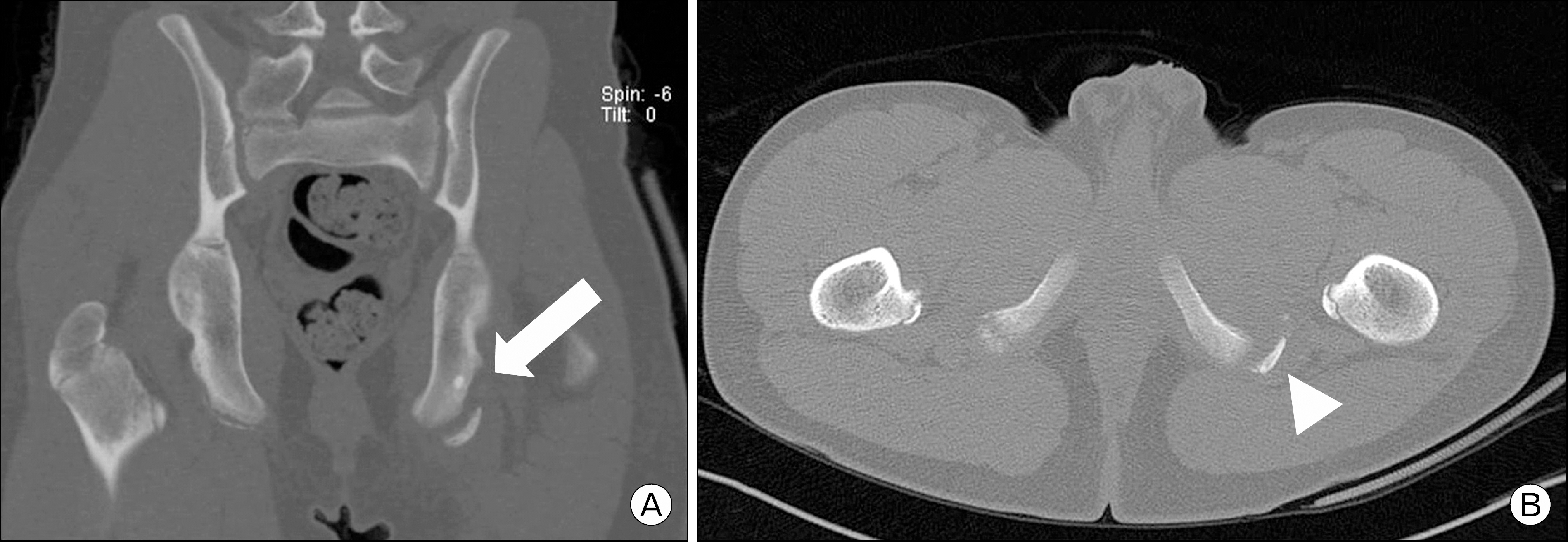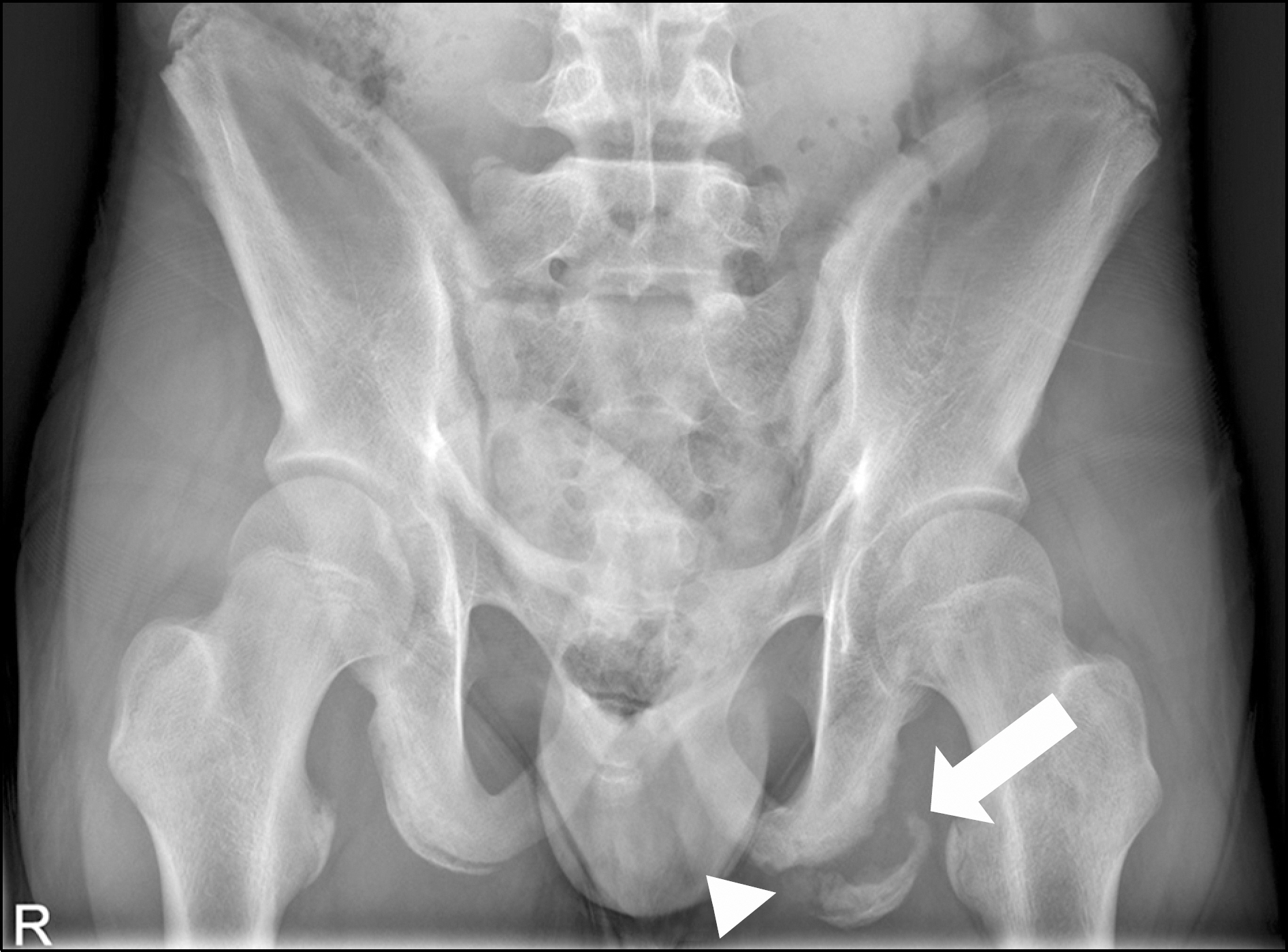Korean J Sports Med.
2017 Dec;35(3):202-205. 10.5763/kjsm.2017.35.3.202.
Apophyseal Avulsion Fracture of Ischial Tuberosity during Soccer: A Case Report and Literature Review
- Affiliations
-
- 1Department of Orthopedic Surgery, Hanyang University Guri Hospital, Guri, Korea. jaekorea@hanyang.ac.kr
- KMID: 2397816
- DOI: http://doi.org/10.5763/kjsm.2017.35.3.202
Abstract
- The incidence of avulsion fracture of ischial tuberosity is reported to present in 1.4%-4% of hamstring injuries. The injury mechanism is known to be caused by a sudden forceful hip flexion in the extended knee with eccentric load to the hamstrings. Although the majority of hamstring injuries are strains of the muscle, avulsion fracture of ischial tuberosity occurs rarely. In this report, a 13-year-old boy with avulsion fracture of ischial tuberosity is presented. Successful clinical outcome was achieved with careful conservative management. Previous literatures including operative indications are reviewed.
Keyword
Figure
Reference
-
References
1. Cohen S, Bradley J. Acute proximal hamstring rupture. J Am Acad Orthop Surg. 2007; 15:350–5.
Article2. Kujala UM, Orava S. Ischial apophysis injuries in athletes. Sports Med. 1993; 16:290–4.
Article3. Greig M, Siegler JC. Soccer-specific fatigue and eccentric hamstrings muscle strength. J Athl Train. 2009; 44:180–4.
Article4. Sundar M, Carty H. Avulsion fractures of the pelvis in children: a report of 32 fractures and their outcome. Skeletal Radiol. 1994; 23:85–90.
Article5. Lee MJ, Reid SL, Elliott BC, Lloyd DG. Running biomechanics and lower limb strength associated with prior hamstring injury. Med Sci Sports Exerc. 2009; 41:1942–51.
Article6. Ferlic PW, Sadoghi P, Singer G, Kraus T, Eberl R. Treatment for ischial tuberosity avulsion fractures in adolescent athletes. Knee Surg Sports Traumatol Arthrosc. 2014; 22:893–7.
Article7. Akova B, Okay E. Avulsion of the ischial tuberosity in a young soccer player: six years follow-up. J Sports Sci Med. 2002; 1:27–30.8. Wootton JR, Cross MJ, Holt KW. Avulsion of the ischial apophysis: the case for open reduction and internal fixation. J Bone Joint Surg Br. 1990; 72:625–7.
Article9. Sarimo J, Lempainen L, Mattila K, Orava S. Complete proximal hamstring avulsions: a series of 41 patients with operative treatment. Am J Sports Med. 2008; 36:1110–5.10. Bodendorfer BM, Curley AJ, Kotler JA, et al. Outcomes after operative and nonoperative treatment of proximal hamstring avulsions: a systematic review and metaanalysis. Am J Sports Med. 2017 October 10. [Epub].https://doi.org/10.1177/0363546517732526.
Article
- Full Text Links
- Actions
-
Cited
- CITED
-
- Close
- Share
- Similar articles
-
- Sequela of Untreated Avulsion Fracutre of Ischial Tuberosity: Report of Two Cases
- Avulsion Fracture of the Calcaneal Tuberosity: 2 Cases Report
- Resection of the Proximal Tendinous Portion in Avulsion of the Semimembranosus Tendon from the Ischial Tuberosity in an Adult: A Case Report
- Isolated Avulsion Fracture of the Lesser Tuberosity of the Humerus: A Case Report
- Ischial Tuberosity Avulsion Stress Fracture after Short Period of Repetitive Training





